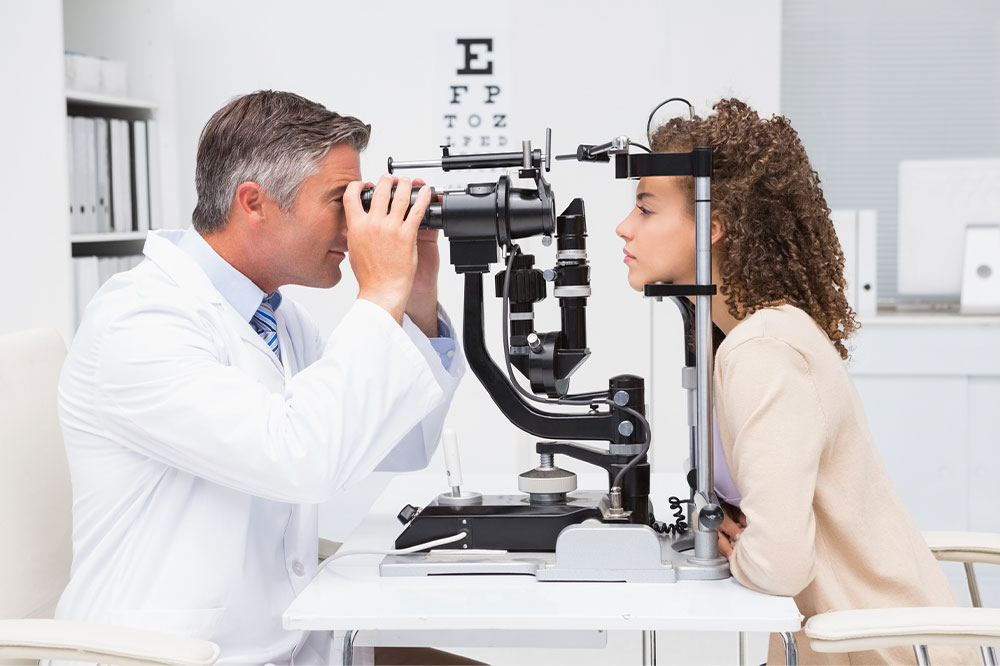
Cataracts – Symptoms, causes, safe foods to eat, and prevention
Cataracts are a prevalent eye condition where an individual’s eye lens becomes cloudy, leading to partial or total vision loss. Cataracts normally develop in both eyes at the same or varying speeds. According to the Centers for Disease Control and Prevention (CDC), 17.2% of people in the country over 40 (about 20.5 million) have cataracts in at least one eye. As per estimates, 30 million people may have the condition by 2028.
Symptoms
Cataracts are one of the leading triggers of blindness. While diagnosing cataracts in individuals, doctors look for certain typical indicators like sensitivity to light, reduced vision in the dark, yellowing of colors, and more. Read further to learn more about them.
Reduced vision in the dark
The cloudy layer on the eye lens causes a cataract patient’s vision to get blurry. As a result, such people find it challenging to carry out simple tasks like reading a book, walking a few paces, or operating a phone, even in broad daylight. In the dark, their vision reduces further, making the most basic tasks impossible without another person’s support during the night.
Sensitivity to light
Light glare, especially bright ones, can cause eye pain in cataract patients, especially those with the posterior subcapsular variant of the disorder. In this condition, the cataract (cloudy cover over the eye lens) forms at the back of the eye lens, rapidly affecting the patient’s vision.
Frequent need to change glasses
Patients with cataracts will feel the need to upgrade their glasses or contact lens several times over a short period. However, it will seldom have any positive impact on their eyesight. If a person goes through multiple pairs of ineffective glasses or contact lenses, the right thing is to visit an ophthalmologist immediately to diagnose and treat the condition.
Yellowing of colors
The cloudy cataract layer formed over the eye lens is made of protein lumps. Over time, this layer turns brown or yellowish. As a result, an advanced cataract patient will get a yellow-tinted view of their immediate surroundings.
Causes
Usually, cataracts result from aging or bad eye injuries, either resulting in the eye lens becoming less transparent, less flexible, and thicker. This phenomenon causes the protein and fiber to degenerate in a patient’s eyes. It results in the formation of a cloudy layer over the lens. Besides aging and bad injuries, long-term conditions, such as diabetes and cancer, also affect the optical protein content, resulting in cataracts.
Preventive measures
Cataracts affect not only people beyond the age of 40 but also youngsters and children in rare cases. Certain routines can reduce an individual’s chances of developing the condition, some of which are listed below.
Keeping blood sugar in check
Diabetes is a direct cause of cataracts in patients. The protein lens that forms a cataract grows in people with high blood sugar. Blood sugar changes into sorbitol in cataract patients. This substance affects their vision even further. Therefore, sugar-rich foods, such as fruit juices, sodas, desserts, and others, must be ingested sparingly or avoided altogether.
Wearing shades
Sunglasses protect the eyes from harmful UV rays present in sunlight and other bright light sources. Several research studies have indicated that UV light causes adverse changes in the chemical composition of the eyes. If a person’s eyes are exposed to this type of light for long periods, then they can develop an opaque protein layer on their eye lens.
Regular eye check-ups
As stated earlier, when the initial symptoms of cataracts start surfacing, one must visit their ophthalmologist immediately. However, a better solution is periodical eye check-ups to detect and treat cataracts quickly.
Treatment
Once a cataract starts forming rapidly in a person’s eyes, surgery is the only practical mode of treatment. About one to two weeks before the surgery, a healthcare professional will examine the person’s eyes to determine which artificial lens will be perfect for the patient. The surgeon makes a small cut in front of the patient’s cataract-affected eye during the surgery. This incision can be made manually or with a laser. The surgeon will break the cataract and suck it out through the cut. Once the new lens is fitted, the opening will be surgically closed. The new lens fitted in the patient’s eye is usually silicone, plastic, or acrylic.
Foods to eat/avoid
Omega-3 fatty acids reduce the risk of cataracts. So foods such as salmon, cod, shrimp, tuna, trout, walnuts, spinach, canola oil, herring, hazelnuts, and peanuts, must be abundantly consumed. Meanwhile, sugar-rich foods are a strict no-no; therefore, white bread, cakes, pastries, sodas, energy drinks, and other foods high in sugar or containing refined grains must be avoided.




